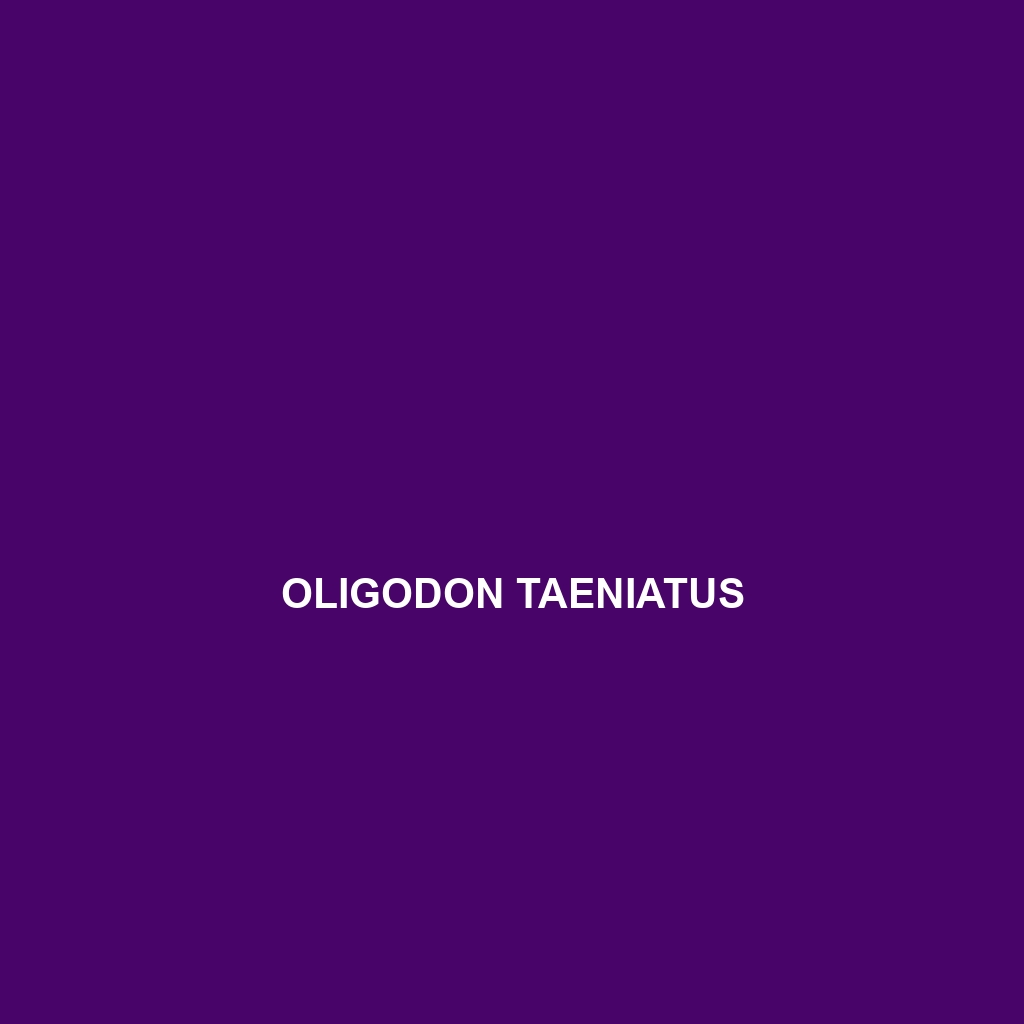Common Name
Oligodon taeniatus
Scientific Name
Oligodon taeniatus
Habitat
The Oligodon taeniatus, commonly known as the striped kukri snake, is primarily found in diverse habitats across Southeast Asia. Its range predominantly covers regions in Myanmar, Thailand, and Cambodia, where the climate is tropical and subtropical. The striped kukri snake favors environments such as rainforests and temperate forests, as well as savannas and grasslands. These ecosystems provide ample cover and hunting grounds for the species, consisting of dense underbrush and leaf litter, where they can easily camouflage themselves from predators and prey alike. Humid conditions and the prevalence of small rodents and invertebrates make these habitats ideal for their lifestyle.
Physical Characteristics
The Oligodon taeniatus typically reaches an average length of 60-80 centimeters, though some individuals can grow larger. This snake is recognizable by its distinctive coloration, featuring a patterned body that usually has a series of dark and light bands along its length, contributing to its attractive striped appearance. The scales are smooth and glossy, often in hues of brown or gray, with lighter shades on the underside. One distinguishing feature of the striped kukri snake is its elongated and slightly flattened head, which separates its body, giving it a unique shape. Additionally, its eyes are relatively large, providing excellent vision, especially during its nocturnal activities.
Behavior
The striped kukri snake exhibits primarily nocturnal behavior, emerging during the night to hunt and explore its surroundings. Its habits include foraging through the leaf litter and utilizing its keen sense of smell to locate prey. Oligodon taeniatus is also known for its unique defensive behavior; when threatened, it will often flatten its body and hiss loudly to deter potential predators. These snakes tend to be solitary, except during the mating season. Their mating rituals typically occur during the rainy season, where males engage in combat for the attention of females. Females can often be found nesting in secluded areas after mating, which is an interesting aspect of their life cycle.
Diet
The Oligodon taeniatus is classified as a carnivore, primarily feeding on small mammals, birds, and various invertebrates. Its diet predominantly consists of rodents and lizards, which it captures using a special feeding technique that involves constriction or quick strikes. As an opportunistic feeder, this species utilizes its excellent camouflage to ambush prey, making it an effective predator in its environment. Occasionally, younger snakes may also consume earthworms and smaller insects, highlighting their adaptability in diet.
Reproduction
The reproductive cycle of Oligodon taeniatus typically occurs during the warmer months, primarily coinciding with the rainy season. Mating generally begins around late spring and continues into summer. After successful fertilization, females lay eggs, averaging around 5-10 eggs per clutch. The gestation period can last approximately 6-8 weeks before the eggs hatch, with the young snakes being independent from birth. Parental care is minimal, with no further involvement from the mother post-oviposition. This reproductive strategy allows the striped kukri snake to maximize its reproductive success in its natural habitat.
Conservation Status
The conservation status of Oligodon taeniatus is currently listed as of “Least Concern” by the International Union for Conservation of Nature (IUCN). However, despite its stable population, the species faces potential threats from habitat destruction, primarily due to deforestation and urbanization. Conservation efforts are focused on preserving its natural habitats and ensuring the protection of ecosystems that support the striped kukri snake, which remains crucial for its long-term survival.
Interesting Facts
One interesting fact about Oligodon taeniatus is its unique ability to mimic certain behaviors of other snake species, a tactic used to bluff potential predators. Additionally, this species is often mistaken for other harmless snakes due to its coloration, which may help reduce encounters with predators. Their “kukri” name, derived from the traditional Nepalese curved knife, reflects their distinct dentition, which features a unique rearward-facing tooth structure that helps with the consumption of prey.
Role in Ecosystem
Oligodon taeniatus plays a significant role in the ecosystems it inhabits. As a predator, it helps regulate populations of small mammals and insects, a vital contribution to maintaining ecological balance. This snake also serves as prey for larger predatory species within its habitat, thus forming an essential component of the food web. By participating in nutrient cycling and soil aeration through its burrowing behaviors, the striped kukri snake also aids in sustaining healthy ecosystems. Overall, its ecological roles underscore the importance of conserving this fascinating species.
